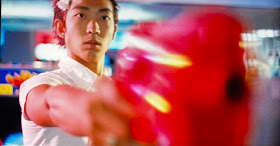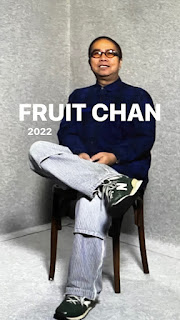Late-1990s Hong Kong Cinema: An Exemplar
The traits of the city were the traits of its cinema. Hong Kong, 1997. The eve of the handover of the colony to China, filmed contemporaneous to this seismic sea-change, although there's little evidence to me-as-foreigner that things are in full conversion mode; instead, the handover seems to be on the horizon, something shopkeepers, and white and black markets, are meant to handle and lay into place. Fruit Chan's debut (the on-screen Chinese title Heung Gong jaijo pretty much dead-on reflects the on-screen English title, as is often the standard case with Asian films).
Death on the installment plan for Ping, wait-listed for a kidney, while Mid-Autumn gives the impression of youth-turned-death, six-pack abs and twisted swallow. Goodbye green-noise from the streets, stand ever upright apartment districts that loom over the sewer, dream on Mid-Autumn and Ping. Made in Hong Kong is a dream dreamt backward as in such Wong Kar-wai films as As Tears Go By, and Days of Being Wild. Start, continue, and finish in five registers of chili-oil. Dab the step-prints and add more heat via homaged Wong's successive step-prints — we'll be investigating the fully formed Fruit Chan Film more as able. •

































